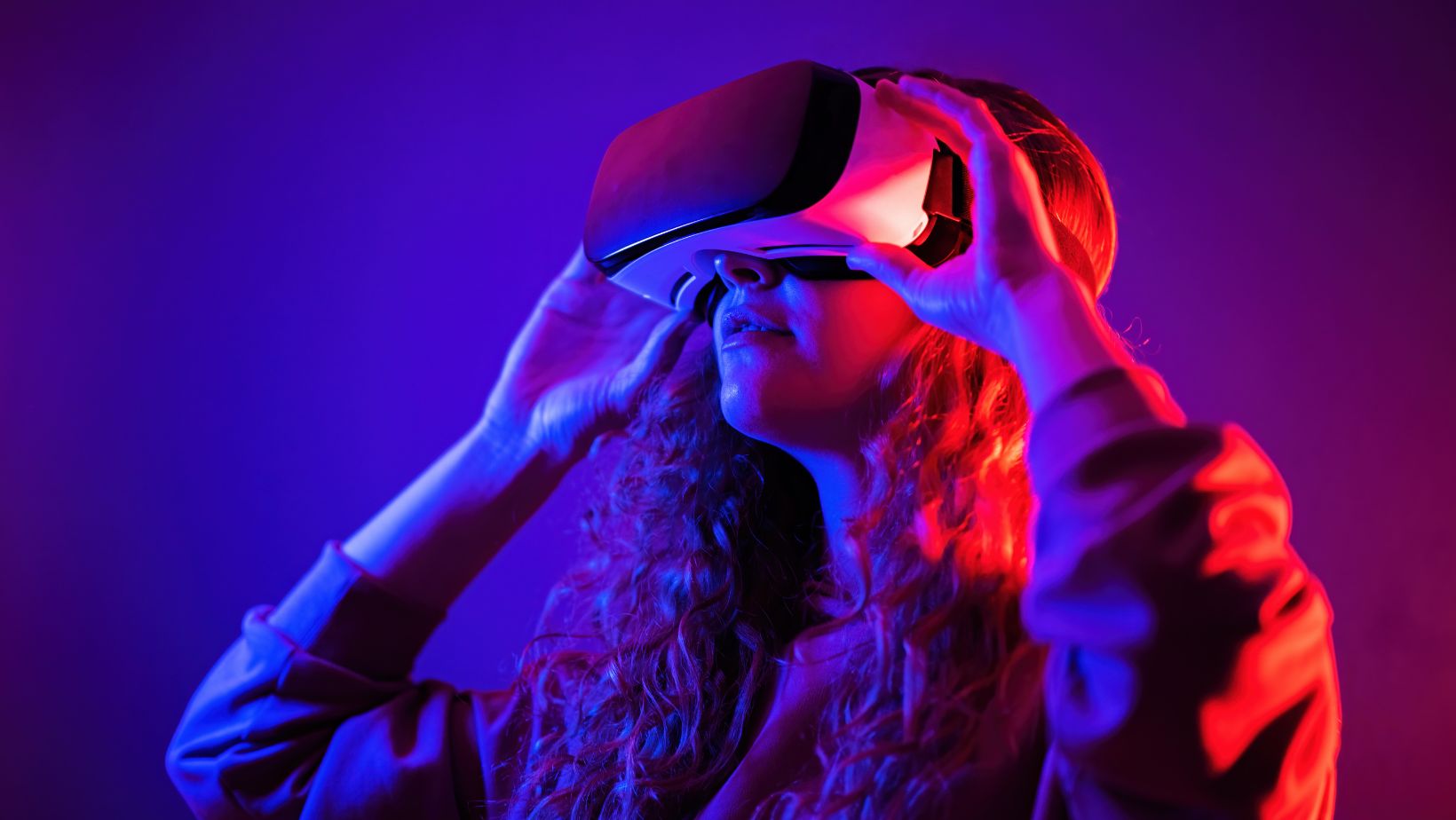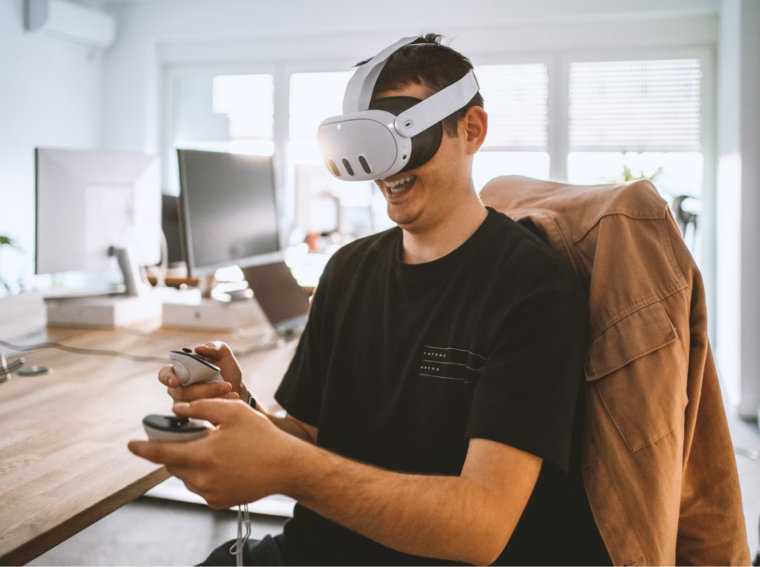Imagine if entering the game meant actually entering the game! Feeling the court under your feet, the audience cheering, and the ball coming to you in real time — all of this from your living room. We are now using virtual reality. Unlike before, we don’t just use it for entertainment; we can also use it for exercising and even competing. Are you looking forward to entering this amazing new Virtual world? In this article, we will discuss it further.
Welcome to the New Game
Forget about watching from the sidelines — VR gives you the opportunity to be inside the game. Serving in Eleven Table Tennis, sprinting in Sprint Vector, or climbing in The Climb 2 — everything feels like a real challenge, not a simulation. Here, the body moves, the heart beats faster, and decisions are made instantly, just like in a real competition. Paradoxically, you no longer need a stadium — just a few meters of space and a headset to feel like part of a big sports world.
And it is this feeling — being involved, being a participant — that easily transfers beyond the virtual world. For many, sports betting has become a natural extension of this involvement: when you follow the match not just as a spectator, but as a person whose intuition and passion really mean something. This is another form of participation in which sport does not end when VR is turned off — it continues in emotions, bets, and victories.
From Real Fields to VR Arenas
Along with being enjoyable, virtual sports have offered new avenues to experience competition, which is why they have seen such a great increase in popularity recently.

Let’s look at the most impactful changes:
- Real-world physics: Real Table Tennis allows for real-world sports practice, as pro athletes use it. The spin, bounce, and paddle angle responses are realistic and hyper-accurate in relation to time.
- Worldwide multiplayer matches: In Gym Class VR, basketball game players from five continents can join a single match simultaneously. No borders, no travel — purely digital.
- Tournaments with actual consequences: Echo VR is one of many games that have active leagues with thousands of players, complete with intra-team rankings and real cash prizes.
- Intense in-game surroundings: In Walkabout Mini Golf, players can discover imaginative mini golf courses complete with moving water features, obstacles, and even team voice chat that can be used with others to foster genuine friendships.
These are just a few of the examples that showcase how, with every new game, the line between sports and pixels blurs further.
Feel the Action Anywhere
Imagine scaling the Alps in socks or boxing an opponent while on the couch. Sounds unrealistic, right? Not in Virtual Reality (VR). Games like Thrill of the Fight track how hard you hit, how fast you dodge, and even how long you can perform footwork. Users can burn over 300 calories in a single 30-minute session. That isn’t just fun; it’s cardio with competition disguised within the endurance.
Even less intense activities, like Sports Scramble, add a different level of intensity through motion tracking, changing what sport players play mid-game, and demanding quick adaptations. Players can hit a tennis ball with a racket, then hit with a baseball bat during the same rally. The outcome? Muscles, brains, and hearts racing. It’s an all-in-one, real-world sports feeling packed into a headset.
Train Like a Pro at Home
Virtual Reality (VR) technology is now known to professional athletes, too. It is used by football teams who make use of STRIVR for quarterback training, allowing players to run through their playbooks under virtual pressure. Cyclists ride on Zwift, which allows them to pedal on virtual roads against live resistance from smart trainers synchronized with VR terrain. But this tech isn’t just for professionals.
Liteboxer VR now offers everyday users the chance to box with rhythm drills while tracking their reaction speed. Rezzil Player offers advanced analytics on every performance, detailing accuracy, balance, and stamina over time.

Feedback of this nature rivals that of a personal trainer — the difference being that this one does not sleep, does not cancel, and works in your living room. From balance training for the elderly to speed drills for children, elite training tools become accessible through VR!
Sports with No Limits
Traditional sports come with barriers — location, weather, access, and even physical ability. VR breaks them all. Here’s how it unlocks new possibilities for more people:
- No field required: All you need is a 2×2 meter space and a headset to play tennis, golf, or football in full 3D with real movement.
- Inclusion for all abilities: Seated modes, voice controls, and custom motion scaling allow people with disabilities to compete at the same level as anyone else.
- No weather problems: Play basketball in a volcano, golf on the moon, or ski during a summer heatwave. Virtual conditions stay perfect, always.
- Cross-age play: A teenager in Seoul can team up with a retiree in Madrid for a round of Walkabout Mini Golf. Experience and personality matter more than age.
The rules are rewritten. VR sports don’t care who you are — they care how you play. And that’s something powerful.
This Is Just the Beginning
This is more than a trend. It’s a movement. Sports used to be confined to courts, countries, and other boundaries, but not anymore. With virtual reality, barriers are being lifted, and new stadiums filled with happiness, excitement, and real human interactions are emerging. No matter whether you are pursuing your goals or just trying to catch your breath, this is the new battlefield. And the most exciting part? This is just the beginning!

